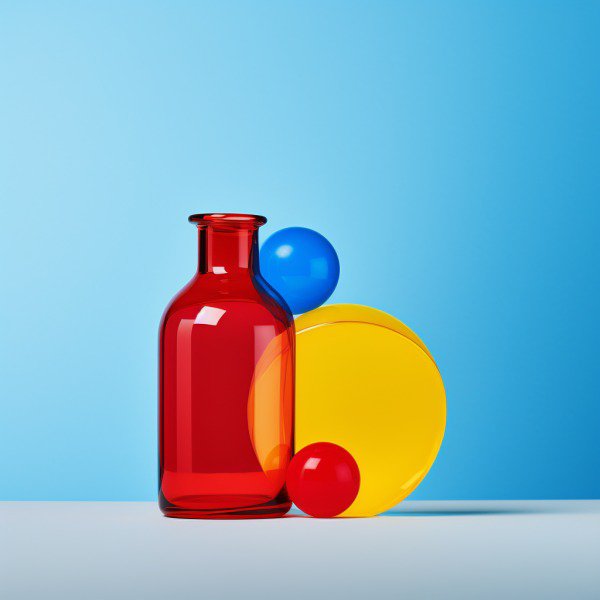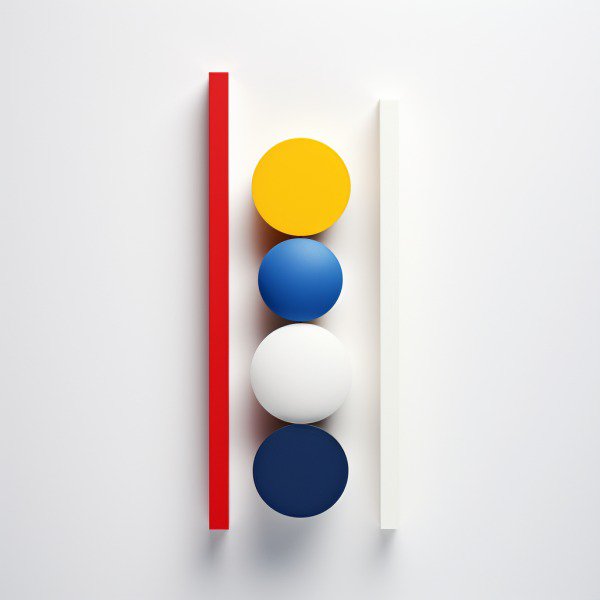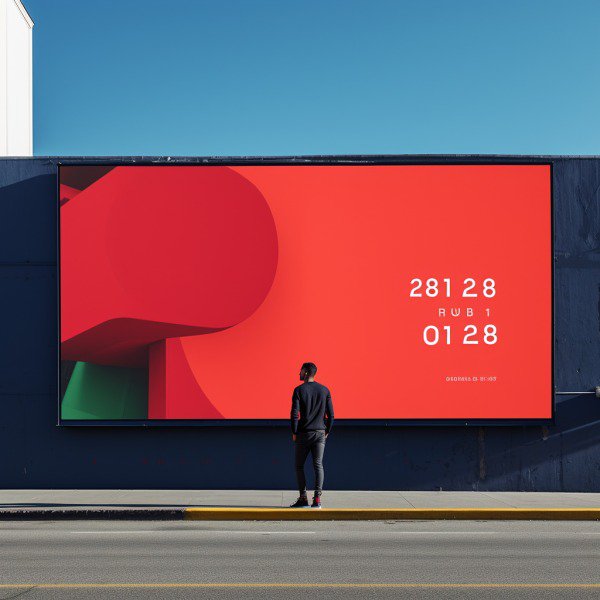Table of Contents:
- Understanding the Role of a Product Designer
- User Experience (UX) Design: The Key to Happy Users
- Design Systems in Product Design: The Secret Sauce for Consistency and Collaboration
- Key Responsibilities of a Product Designer
- Product Designer in Different Company Scales
- FAQs in Relation to Product Designer Role
- Conclusion
Picture this: you’re a founder with an incredible idea for a product that could revolutionize the market.
Assemble your team, set ambitious goals and start the journey of bringing your vision to life – it’s time for a Product Designer to take charge. Enter the Product Designer Role – a crucial component in turning ideas into tangible products users will love.
In this blog, we’ll explore the nuances of product design and how talented designers work together with user research and data-driven insights to create a smooth UX Design.
We’ll also explore the intricacies of User Interface (UI) Design, balancing aesthetics with functional considerations while maintaining usability at its core.
As we navigate through design systems in Product Design and discuss key responsibilities associated with the Product Designer Role, you’ll gain valuable insight into how these professionals contribute significantly to both small startups and larger companies alike by translating business requirements into effective designs and iterating on them based on user feedback.
By understanding what makes an exceptional product designer tick, you can better align your team member’s skills and expertise toward achieving success in today’s competitive marketplace.
Understanding the Role of a Product Designer
Let’s dive in, shall we?
A product designer is like a superhero who solves problems using their unique powers: UX, UI, and design systems.
Their mission? To make users feel fantastic while interacting with digital products.
A product designer’s purpose is to craft successful digital experiences by interpreting user behavior and needs.

User Experience (UX) Design: The Empathy Powerhouse
UX design is all about understanding user behavior and needs to create an intuitive interface for them.
This involves conducting research to study what users do while using the interface and identifying areas for improvement. Sounds exciting, right?
Importance of User Research in UX Design
User research: It’s like having X-ray vision into your users’ minds.
Analyzing User Behavior Through Data-driven Insights
Data can be your best friend when designing better user experiences – if you know how to use it wisely.
Discover more about the utilization of data to create enhanced user experiences here.
User Interface (UI) Design: The Visual Maestro
The visual aspect of product design falls under UI, which includes colors, typography, layout, and other aesthetic components that affect both appearance and functionality.
Not just about looks – there’s more to it.
Balancing Aesthetics with Functional Considerations
A good UI designer knows how to create visually appealing interfaces without compromising usability.
Discover the delicate balance between aesthetics and function in this insightful article.
Creating Visually Appealing Interfaces Without Compromising Usability
Want some tips on creating eye-catching designs that still prioritize user needs?
User Experience (UX) Design: The Key to Happy Users
Let’s talk about UX design, the secret sauce of successful digital products.
You might be wondering, what exactly is user experience design? In short, UX design is about comprehending user behavior and requirements to build a straightforward interface for them.
The Importance of User Research in UX Design
User research is the backbone of effective UX design. By conducting interviews, surveys, or even observing users interacting with your product firsthand, you can gather valuable insights into their pain points and preferences. There are various methods for user research – choose one that best fits your project.
Analyzing User Behavior Through Data-Driven Insights
Data-driven insights are essential in making informed decisions during the design process. This involves using tools like Google Analytics, heatmaps, or session recordings to study how users interact with your interface and identify areas for improvement.
- By combining quantitative and qualitative data, such as click-through rates and usability test feedback, you can gain valuable insights to inform your design decisions.
- Avoid relying solely on assumptions; always validate them through real-world testing.
Let’s now delve into the visual side of things – UI design.
User Interface (UI) Design: The Art of Balancing Aesthetics and Functionality
Alright, let’s dive into the visual side of product design.
User interface (UI) design is all about creating an attractive and functional interface that users will enjoy interacting with.
How to attain the ideal equilibrium?
Balancing Aesthetics with Functional Considerations
First things first, UI designers need to understand that beauty goes beyond skin deep in digital products.
An aesthetically pleasing interface may grab a user’s attention initially, but if it doesn’t function well, they’ll quickly lose interest.
Research has shown that users perceive visually appealing interfaces as more usable even when they’re not necessarily so – which means striking the right balance is crucial.
Creating Visually Appealing Interfaces without Compromising Usability
To create a successful UI design, start by focusing on your users’ needs and expectations while keeping these key principles in mind:
- Hierarchy: Create clear distinctions between different elements on the page to guide users through their journey effortlessly. This can be achieved using size variations or contrasting colors for headings and subheadings.
- Consistency: Maintain consistent typography, color schemes, icons, and buttons across your entire product. This helps establish familiarity among your audience, making navigation easier.
- Clarity: Make sure every element serves a purpose. Remove unnecessary clutter and distractions to keep users focused on the task at hand.
- Feedback: Provide visual cues, such as hover effects or animations, that let users know they’ve successfully interacted with an element. This helps create a more engaging experience.
Creating an enjoyable user experience is key to successful UI design.
Want to learn more? Check out this comprehensive guide on UI design principles.
Now that you have a better understanding of UI design, let’s move forward and explore how design systems play an important role in building products.
UI design is about creating an attractive and functional interface that users will enjoy interacting with. Striking the right balance between aesthetics and functionality is crucial, as research has shown that visually appealing interfaces are perceived as more usable even when they’re not necessarily so. To create a successful UI design, focus on your users’ needs and expectations while keeping key principles in mind such as hierarchy, consistency, clarity, and feedback.
Design Systems in Product Design: The Secret Sauce for Consistency and Collaboration
Let’s talk about design systems, shall we?
Imagine you’re a product designer working on multiple projects within the same company. You need to ensure consistency across all products while making collaboration with your fellow designers a breeze. The solution? Design systems.
Benefits of Implementing a Consistent Design System
A well-defined design system is like having an instruction manual for your brand’s visual language. It streamlines the workflow by giving a toolbox of components, patterns and rules that are simple to use.
- Maintains brand consistency across different products and platforms – no more rogue colors or mismatched typography.
- Saves time by reducing redundant work – goodbye endless tweaking of similar elements.
- Fosters better communication between team members – say hello to smooth handoffs and fewer misunderstandings.
How Efficient Collaboration Leads to Better-Designed Products
A cohesive design system isn’t just about aesthetics; it also promotes efficient teamwork among designers. Easier sharing of assets means less duplication of effort – now everyone can focus on creating awesome user experiences instead of reinventing the wheel every time they start a new project. Better documentation helps prevent misinterpretations – no more guessing games when it comes to implementing designs correctly. A shared understanding of design principles leads to more consistent decision-making – everyone’s on the same page, and that translates into a unified vision for your products.
So there you have it. Design systems are the secret sauce that can take your product designs from good to great by ensuring consistency and fostering efficient collaboration among team members. If you’re interested in learning more about product design, check out our guide to the important role of product designers in building products that meet business goals and user needs through user research and a well-defined design process.
Now go forth and conquer the world of product design with your newfound knowledge.
Design systems are essential for product designers working on multiple projects within the same company. A well-defined design system streamlines the design process, maintains brand consistency, saves time and fosters better communication between team members leading to more efficient collaboration and better-designed products.
Key Responsibilities of a Product Designer
Let’s dive into the exciting world of product designers. Their daily tasks may vary, but some core responsibilities remain constant. Are you ready to explore?
Translating Business Requirements into Effective Designs
A crucial part of a product designer’s role is understanding business needs and objectives. This involves creating storyboards or user flows that guide users through their journey with your digital product. A good product designer knows how to design products that align with the business goals.
Developing Wireframes & Prototypes for Product Testing
Next up: wireframing. Wireframes at varying levels of fidelity are essential tools in the design process, allowing you to visualize ideas before investing too much time or resources. Product designers work closely with team members to build products that meet user needs.
Iterating and Refining Designs Based on User Feedback
No one gets it perfect on the first try – that’s where iteration comes in handy. Testing prototypes with real users, gathering feedback, and refining designs until they’re just right is an ongoing process for every successful product designer. User research is an important part of the design process.
Tips for Successful Iteration:
-
Maintain an open attitude and be ready to adjust your plans according to user input.
-
Don’t be afraid to start with low-fidelity prototypes – they’re quicker to create and easier to iterate upon.
-
Maintain a strong line of communication with stakeholders, ensuring everyone is aligned on goals and expectations throughout the design process.
In essence, product designers are problem solvers who combine UX, UI, and design systems expertise to create delightful digital experiences for users. Their key responsibilities include translating business requirements into effective designs, developing wireframes & prototypes for testing purposes, and iterating based on user feedback until perfection is achieved.
Product Designer in Different Company Scales
Are you curious about how a product designer’s role might differ depending on the size of the company they work for? Fear not, my friend. We’ll break it down for you and show you how these versatile professionals adapt to different environments.
Adapting to Different Roles within Small Startup Environments
In smaller startups, a product designer is often a one-person army. They juggle multiple responsibilities that larger organizations typically divide among UX designers, UI designers, and others. This means they need to be skilled in various aspects of design while being agile enough to switch between roles as needed. This article explains this phenomenon quite well.
Collaboration with Cross-Functional Teams in Larger Companies
Larger companies usually have more specialized teams working together on projects. This article provides valuable insights into this process. A product designer collaborates closely with other team members such as developers, marketers, project managers – just about everyone involved.
- Action Item #1: Understand your organization’s structure and adjust accordingly. Be ready to wear multiple hats if necessary or collaborate effectively with cross-functional teams when required.
- Action Item #2: Stay up-to-date on industry trends and best practices. This will assist you to adjust to different roles more easily and guarantee your designs are always of the highest standard.
- Action Item #3: Develop strong communication skills, as they’re essential for working with diverse teams or managing multiple responsibilities in smaller startups.
By understanding the nuances of a product designer’s role in various company scales, you’ll be better equipped to find the perfect match for your startup. And remember – whether it’s a small team or large organization, great design is always at the heart of successful products.
FAQs in Relation to Product Designer Role
What is the main role of a product designer?
The main role of a product designer is to create user-centric products by understanding user needs, translating business requirements into effective designs, and collaborating with cross-functional teams. They focus on both User Experience (UX) and User Interface (UI) design while developing wireframes, prototypes, and iterating based on feedback.
What is true regarding the role of the designer in product development?
In product development, designers play a crucial part in ensuring that products are visually appealing yet functional. They conduct user research, analyze data-driven insights for informed decisions, balance aesthetics with usability considerations and work closely with other team members to deliver well-designed products that meet users’ expectations.
What is good about being a product designer?
Being a product designer allows you to impact people’s lives positively by creating intuitive and enjoyable experiences. You get opportunities for continuous learning through collaboration with diverse teams and adapting to different roles within various company scales. The field also offers creative challenges that help develop problem-solving skills.
What are the 3 main responsibilities designers have?
- User Research: Understanding users’ needs through interviews or surveys
- Data-Driven Design Decisions: Analyzing behavior patterns using quantitative data
- Crafting Functional & Aesthetic Interfaces: Balancing visual appeal with usability factors
Conclusion
In conclusion, the role of a product designer is crucial in creating effective and user-friendly products. Through UX design, designers can gain valuable insights into user behaviour and preferences to create interfaces that balance aesthetics with functionality. A consistent design system can bring about advantages for the product’s overall appearance and operation, as well as foster more productive teamwork.
Product designers are responsible for translating business requirements into effective designs, developing wireframes and prototypes for testing, and iterating based on user feedback. As companies scale, product designers must adapt to different roles within small startup environments or collaborate with cross-functional teams in larger companies.
If you’re looking for top-tier Product Designers who can help take your company’s digital presence to new heights by building engaging experiences that delight users while driving growth, look no further than Design Match.



